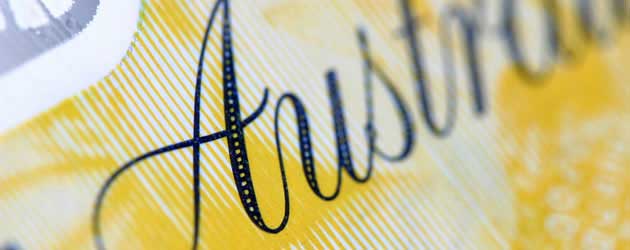
The Australian Dollar (AUD) firmed against the US Dollar (USD) and looks set to advance to its best level in 7-years against the Japanese Yen (JPY).
On Wednesday, the Australian Dollar was holding at its highest level of the year so far against the Euro (EUR) and Japanese Yen and remained resilient against the US Dollar by trading in the region of 93 cents.
The ‘Aussie’s’ rise was as a result of the currency resisting the effects of the strong US Dollar and as investors continued to favour the currency as they seek higher assets. With Australia’s interest rates higher than those in the US, Eurozone and Japan, anyone seeking higher returns is favouring the ‘Aussie’.
Against the Japanese Yen, the ‘Aussie’ was stronger as the Asian economy saw a string of disappointing economic data releases, in particular poor Gross Domestic Product (GDP) figures.
‘Data such as the ‘shocking’ GDP figures and investor production numbers as well as Japan’s consumption tax rise which kicked off on April 1 have all contributed to a 1.7% contraction in the nation’s GDP in the second quarter. There’s a little more talk about whether the Bank of Japan might have to increase the pace of money printing because of the weak economic data,’ said Sean Callow, Westpac Banking Corps currency strategist.
Economists are forecasting that the AUD/JPY exchange rate will strengthen even further over the coming weeks and could see the pair reach ¥97.50.
Against the US Dollar, economists are forecasting that the ‘Aussie’ could continue to sustain itself at the US92 cents level until the end of the year.
Against the Euro, the Australian Dollar is likely to make further gains. If inflation data out of the 18-member Eurozone shows a further decline in the inflation rate, we can expect economists to increase their bets that the European Central
Bank will announce quantitative easing measures at its next policy meeting, a move that will put more pressure upon the Euro and send the Australian Dollar higher.
A string of disappointing data releases out of the Eurozone on Thursday added to the downward pressure on the single currency.
Consumer Confidence in Germany and Italy fell whilst French business confidence fell to its lowest level in 13-months.
The Australian Dollar was also finding support from improved risk sentiment, after a long-term ceasefire between Israel and Palestinian militants in Gaza was reached. Hopes of an end to the fighting in eastern Ukraine were also raised following a meeting between Russia and Ukraine’s Presidents.
AUD/USD and AUD/EUR Exchange Rate Continues to Trend Higher
The ‘Aussie’ has continued to trend high against the majority of its major peers on Thursday following impressive economic data publications.
Australian second quarter Private Capital Expenditure was forecast to retract by -0.9%, but the actual data showed a surplus growth of 1.1%. The dramatic upswing from the forecast figure effectively micrified the less-than-impressive New Home Sales data, which would normally have a greater weighting in terms of wider market movement.
With the US Gross Domestic Product data due for publication later on Thursday; most traders have bought their profits from the recent bullish run causing the ‘Greenback’ (USD) to soften across the board.
Japanese domestic data was slightly below par on Thursday as the foreign stocks and foreign bonds data showed less expenditure. If hostilities between Russia and Ukraine continue to mount the safe haven qualities of the Yen will be attractive to investors.

Comments are closed.